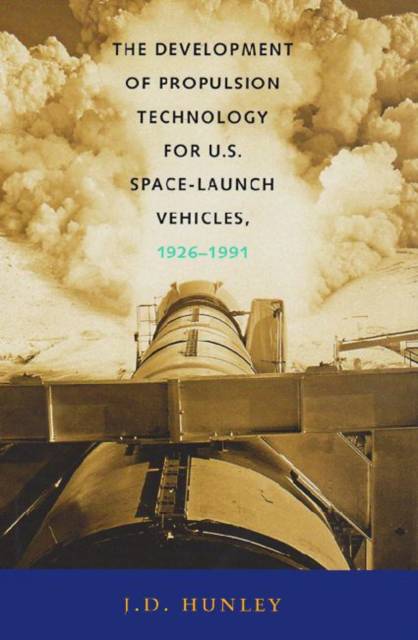
- Afhalen na 1 uur in een winkel met voorraad
- Gratis thuislevering in België vanaf € 30
- Ruim aanbod met 7 miljoen producten
- Afhalen na 1 uur in een winkel met voorraad
- Gratis thuislevering in België vanaf € 30
- Ruim aanbod met 7 miljoen producten
Zoeken
The Development of Propulsion Technology for U.S. Space-Launch Vehicles, 1926-1991
J D Hunley
€ 50,45
+ 100 punten
Omschrijving
In this definitive study, J. D. Hunley traces the program's development from Goddard's early rockets (and the German V-2 missile) through the Titan IVA and the Space Shuttle, with a focus on space-launch vehicles. Since these rockets often evolved from early missiles, he pays considerable attention to missile technology, not as an end in itself, but as a contributor to launch-vehicle technology. Focusing especially on the engineering culture of the program, Hunley communicates this very human side of technological development by means of anecdotes, character sketches, and case studies of problems faced by rocket engineers. He shows how such a highly adaptive approach enabled the evolution of a hugely complicated technology that was impressive-but decidedly not rocket science. Unique in its single-volume coverage of the evolution of launch-vehicle technology from 1926 to 1991, this meticulously researched work will inform scholars and engineers interested in the history of technology and innovation, as well as those specializing in the history of space flight. J. D. HUNLEY's career as a historian has focused on the history of aerospace technology. He was named a Ramsey Fellow at the National Air and Space Museum for 2001-2002 after serving in history programs for both NASA and the U.S. Air Force. He holds a Ph.D. from the University of Virginia. Now semiretired, he continues to write about the history of America's space program
Specificaties
Betrokkenen
- Auteur(s):
- Uitgeverij:
Inhoud
- Aantal bladzijden:
- 388
- Taal:
- Engels
- Reeks:
- Reeksnummer:
- nr. 17
Eigenschappen
- Productcode (EAN):
- 9781603449878
- Verschijningsdatum:
- 1/02/2013
- Uitvoering:
- Paperback
- Formaat:
- Trade paperback (VS)
- Afmetingen:
- 152 mm x 229 mm
- Gewicht:
- 585 g

Alleen bij Standaard Boekhandel
+ 100 punten op je klantenkaart van Standaard Boekhandel
Beoordelingen
We publiceren alleen reviews die voldoen aan de voorwaarden voor reviews. Bekijk onze voorwaarden voor reviews.











